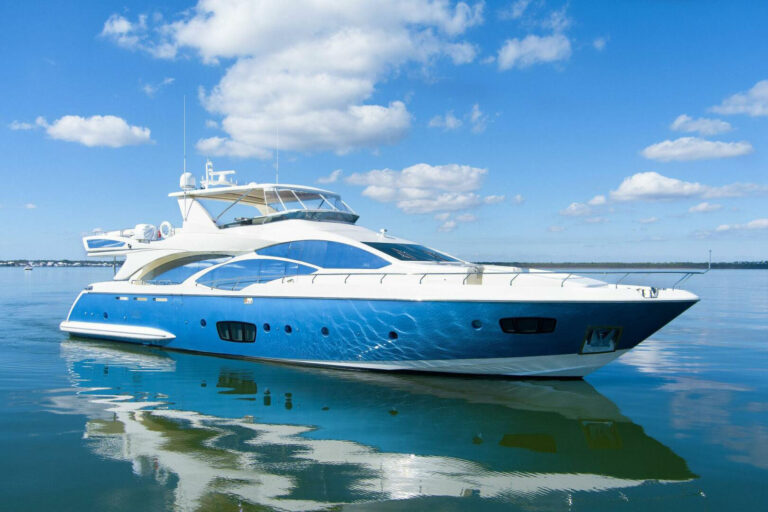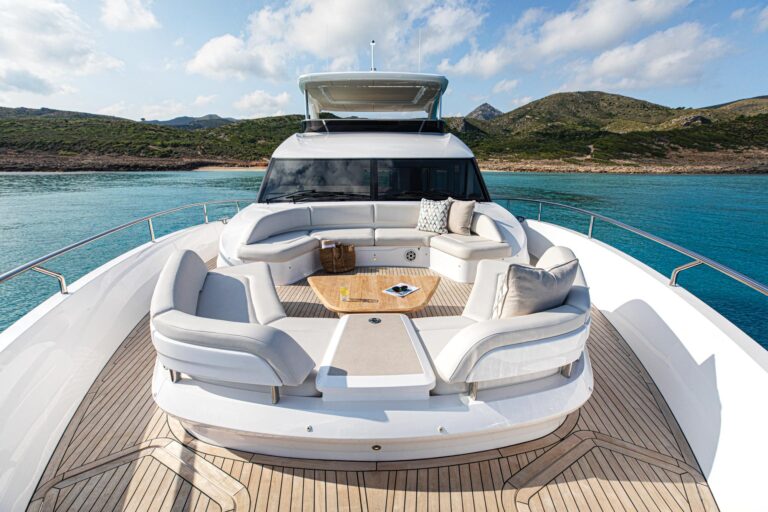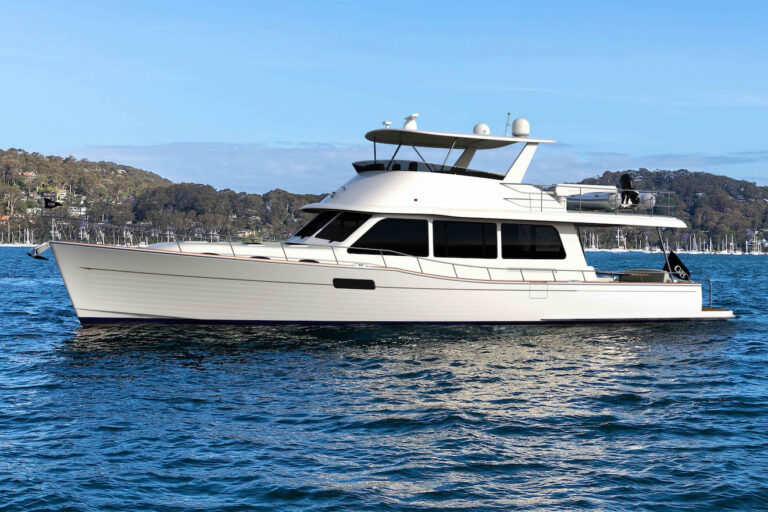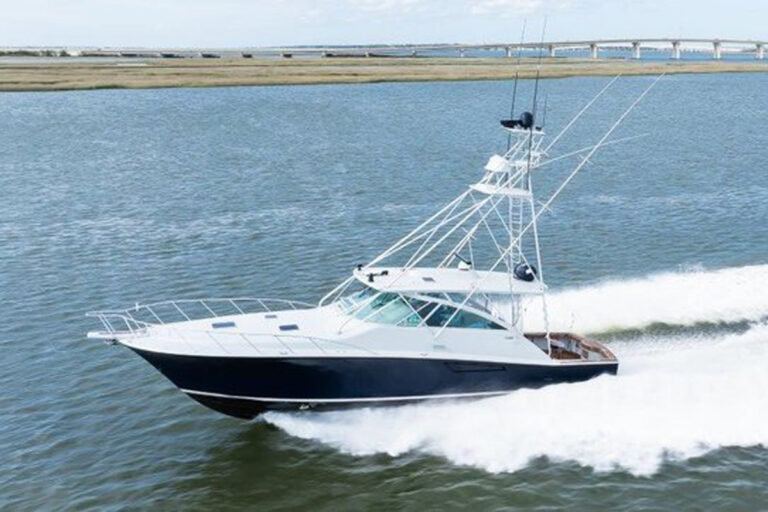We heard the splash and then the blood-chilling cry, “Man overboard!”
Leaping out of the cabin, all we could see was a fast-diminishing dark head in the broad white wake, tossed about by the swells and clearly struggling to stay afloat. Now what?
Happily, this was just one of literally hundreds of tests we carried out this summer during the Crew Overboard Symposium on San Francisco Bay. An elite group of sailors, powerboaters and concerned boating experts had gathered to evaluate better ways and better equipment for dealing with these situations, and our “victim” was really a strong and capable scuba diver.
After four days of exhaustive testing and re-testing of rescue methods and equipment, I learned one lesson that had been drilled in time after time until it became a mantra that I chanted as I toppled into bed each night: Don’t fall overboard.
The Crew Overboard Symposium (COB) was sponsored and organized by several safety-minded groups and spearheaded by marine supplier West Marine, along with Modern Sailing Academy, a sailing school based in Sausalito, California. These two had collaborated in the 1990s on a similar man overboard program, when they discovered several safe and innovative ways for sailboats to retrieve overboard crewmembers that are now accepted worldwide. Funding for this event came from the Bonnell Cove Foundation, a nonprofit arm of the Cruising Club of America dedicated to improving boating safety, with additional support from BoatU.S., North Sails and the Sailing Foundation of Seattle.
An expert committee headed the COB, including Chuck Hawley of West Marine, John Connolly of Modern Sailing Academy, Ruth Wood of BoatU.S. Foundation for Boating Safety, Karen Prioleau of Orange Coast College Sailing, and John Rousmaniere, author of The Annapolis Book of Seamanship and a former Yachting editor.
During the four days, more than 115 volunteers took part, and 40 different rescue devices were tested in conditions ranging from smooth water and light winds up to choppy seas and 36-knot gusts. Perhaps more amazing was the large group of volunteer “victims”: experienced divers willing to brave the icy waters and turbulent currents of San Francisco Bay in a quest for knowledge. They jumped overboard more than 400 times, which sets a new standard both for stamina and sheer foolishness.
Fifteen different boats ranging from 21 to 53 feet participated, including a dozen sailboats and three powerboats, making this the largest ever crew overboard/rescue trial with a representative range of American boats. A formal report will be issued after all the facts and statistics have been merged with the input from the nightly debriefing sessions. As it turned out, I learned enough to fill a book even without the report.
First, the sailboat testing pretty much proved that sailors are better prepared than powerboaters for a man-overboard crisis. The very nature of sailboats, with sails and booms and lots of foot-tripping gear on deck, makes going overboard a real possibility. Sailors have developed well-established methods and equipment for handling such a situation.
Powerboaters, on the other hand, generally live in an it-can’t-happen-to-me world. Cosseted by comfy seats and surrounded by rails, most powerboaters simply aren’t prepared for someone falling overboard. Nearly every sailboat has some sort of throwable rescue device near the cockpit; very few powerboats have such an item. So when someone does go ass-over-teakettle into the drink, the powerboaters look pretty incompetent.
I spent my time on the water aboard Five Star, a Grand Banks 42 loaned and skippered by Gerry Ramsey, who didn’t flinch as we dragged lines, gear and “victims” across his immaculate varnishwork. It was an eye-opening experience and it added a corollary to my mantra: If you have to fall overboard, don’t fall from a powerboat.
Humor aside, there are really five parts to a man overboard recovery. A breakdown in any part doesn’t bode well for the person in the water, so each needs to be understood clearly. Even more important, the man-overboard procedure should be practiced and practiced, which is something I’ll return to later.
The five segments of a recovery are as follows:
- Getting buoyancy to the victim.
- Keeping the victim in sight.
- Returning to the victim.
- Connecting the victim to the boat.
- Retrieving the victim on board.
Getting buoyancy to a victim is essential. It’s unlikely he’s wearing a lifejacket and trying to keep one’s head above water even in a slight chop can be exhausting. In big seas, it’s deadly.
The U.S. Coast Guard regulations require a type IV throwable device to be immediately available aboard nearly every boat larger than 16 feet. For most boats, that’s the ubiquitous square life cushion that often ends up buried uselessly in a cockpit locker. So get that cushion near the helm and keep it there! Even better is to insist that everyone on deck wear flotation. An unobtrusive and comfortable life vest that inflates automatically costs between $100 and $200. It’s good insurance.
Before any of the tests were tried on a living volunteer, we practiced by using Oscar, a foam-headed mannequin that was weighted to resemble a person in the water. Once again, there was a revelation: A bobbing head is damned hard to see even in nearly smooth water. Oscar was Styrofoam white, so he should have easily been visible against the gray-blue Bay waters, but several times we found ourselves looking around: “Where’d Oscar go?” Swimmers were even more difficult to spot. Aboard the Grand Banks, our swimmer was Dr. Page Read, whose dark hair made him tough to see until he pulled up his bright orange jacket hood.
The key to keeping track of the victim is to have one person never-never!-take his eyes off the swimmer. The spotter should hang onto the boat with one hand and point at the swimmer with the other so that the skipper has a ready visual indication of the swimmer’s location even if he can’t communicate with the spotter. When practicing a man-overboard procedure, give everyone a chance at being the spotter, because it’s more difficult than you’d think.
If there is a “man overboard” button on your GPS, now is the time to punch it. On some units, it gives a return course to the swimmer; on others it gives a graphic display of his location.
The first two segments-getting the victim buoyancy and having a spotter-should be done both immediately and concurrently, while the skipper quickly decides how best to return to the victim. It’s here that we found some variables. First, you have to know your boat and, once again, that comes only with practice. For some powerboats, the fastest way to get back to the victim in the water is to spin the steering wheel hard over before you even touch the throttles. On other boats, you may want to chop the throttles and then spin the wheel. You can figure this out by throwing that life cushion over and seeing which method works best on your boat.
While doing your tests, remember to turn the boat in each direction, because some boats may turn better to port than starboard. Aboard Five Star, we found that chopping the throttles and then spinning the wheel made for the smallest turning circle, perhaps because the long keel wanted to go straight at higher speeds. We also turned to starboard, not because it was faster, but because both upper and lower helm positions were offset to starboard, so the skipper had a better view of the victim in the water.
Theoretically, you should be able to simply drive back to your victim, stop upwind and drift down gently on the victim while you throw him a line. In real life, a powerboat rolling in lumpy seas can be dangerous to the victim in the water, so the skipper needs to judge the situation and decide on approaching from leeward or on either side.
One danger posed by powerboats is the propellers. Without use of the engines, the boat can’t maneuver, but, on the other hand, having someone in the water, with propellers turning nearby, is asking for trouble. Our solution was to kill the engine on the side nearest the swimmer, which left us with limited maneuverability and more safety. A requirement of the skipper, however, is what fighter pilots call “situational awareness.” He needs to know that, for whatever reason, the victim hasn’t been moved around to the side with the live engine and, if so, he should kill that engine as well.
Once you’ve returned to the swimmer’s area, you need to connect him to the boat. That can be as simple as heaving a line to the victim, throwing one of the line-toss devices that improve accuracy or pulling a line past the swimmer.
Without putting too fine a point on it, most boaters can toss a dockline to the pier but have no idea how to heave a coiled line 40 or 50 feet with accuracy. For that reason, a throw-rope bag works well. This is basically a cloth bag with a handle, filled with neatly coiled line. You hang onto the end of line protruding from the bag and, with a gentle underhand toss (like horseshoes), you can lob the bag up to 70 feet with accuracy.
I think the best powerboat solution for connecting with the victim, and one that we proved again on San Francisco Bay, is the Lifesling. This is a horseshoe-shaped buoy at the end of a length of line. By tossing the Lifesling over the stern, you turn the boat in a circle around the victim. Just as with a waterski tow rope, the Lifesling line will cross the swimmer, who can slide down to the end. There, he puts the padded horseshoe around his back and under his arms.
Lifeslings are available in either a solid or an inflatable version, and both worked well. One strength of the Lifesling is that it allows a powerboat to use its maneuverability to deliver the line to the swimmer, rather than trying to throw a line. Furthermore, it also keeps the swimmer well away from the props until connected and, last, it’s a good solution for singlehandedly recovering a man overboard.
Sadly enough, simply connecting the swimmer to the boat isn’t the end of the crisis. There have been several tragic situations where a lone crewmember aboard was able to get a line to the victim, but couldn’t get him aboard before hypothermia set in with fatal results. The high freeboard of most powerboats makes them a Mt. Everest to the swimmer. “No problem,” you say. “I’ll just use the swim platform at water level to retrieve the victim.”
Maybe not. Unless the water is nearly calm (and who falls overboard in calm water?), the pitching of a powerboat in swells can turn the swim platform into a deadly hammer that can smash down on an unwary swimmer. No, the swim platform is probably the last place you want to use to retrieve your swimmer. We tried several different methods on the Grand Banks, starting with the basic Lifesling. As we expected, we could get the victim up to the hull side, but none of us could lift the deadweight of a soggy man three or four feet into the cockpit.
Our Grand Banks was equipped with a davit on the boat deck and, since the Lifesling can be used for hoisting, we gave that a try and it worked well. Once hooked, a touch of the button and our victim was standing on the aft deck.
If you don’t have a handy davit, a padeye can be installed high on the cabin side or even a radar arch so you can use a 5-1 hoisting tackle to achieve the same result. With the tackle, a 200-pound man could be hoisted by a woman without needing to pull more than 40 pounds and, in the adrenaline of the moment, that should be no problem.
In one of the debriefings, Dan Rugg, Sailing Master of the U.S. Naval Academy, Grand Banks owner Gerry Ramsey and I were discussing how we might deal with a shorthanded retrieval aboard his boat. We would have the throwable Lifesling at the flying-bridge helm (where Gerry normally runs the boat) but attached to the lower cockpit. Thus he could throw the Lifesling into the water, drag it past the victim, and then shut down the engines. Moving to the lower deck, he could bring the victim alongside and secure him temporarily while he hooked up the davit and then hoisted him aboard. It was a plan that was not just feasible, but one whose elements we’d already tested.
We also tried various types of ladders to help a victim climb up the topsides into the cockpit. Several were of such flimsy netting that they twisted up from the water motion and were more likely to tangle the victim than help him aboard. The one that we all liked was the Markus Rescue Net, a Finnish invention made of heavy webbing (www.markuslifenet.com). It resembled the cargo nets that WWII troops used to climb down into landing craft, and it’s proven very successful with Scandinavian fishing fleets. We liked it because it was stiff enough to stay in place, deep enough that our victim could get his feet on it in the water and easily attached to the handrails aft.
Of course, a victim suffering from hypothermia, exhaustion or even unconsciousness isn’t going to be climbing nimbly up the cargo net. In that situation, the Markus net can be used to “roll” them up the hull. By bringing the net under a victim lying horizontally in the water, the net can be hoisted either by manpower or a tackle and the victim is brought to deck level. An unconscious victim may get bonked occasionally on the hull as the boat rolls but, hey, the alternative isn’t really that good. Page Read, our victim, said that it was surprisingly comfortable and would work well with hypothermia victims, who should be lifted in the prone position.
One intriguing piece of equipment was the Alert Man-Overboard Alarm (www.alert2.com) that combines several functions into one package. A water-activated transmitter, about the size of a mini-flashlight, is clipped to each crewmember. Once overboard, it transmits a radio signal to a receiver on board, which sets off a very loud alarm, alerting the entire crew.
Then, using the Alert Direction Finder, the boat can home in on the victim from as far away as one mile. In testing, the loud horn and red LED on the direction finder pointed us directly back within feet of the victim.
So far, I’ve talked about what the rescuers should do, but what about the victim? First of all, as I said earlier, don’t fall overboard. If you must, be sure you’re wearing flotation.
Once you’re in the water, make yourself visible. Splash the water around you, or pull up a bright-colored hood. Don’t try to swim after the boat: Save your strength to swim to the flotation device. Keep your clothing on and trap air inside, but get rid of non-buoyant items like boots. Shouting doesn’t carry as far as you think, but a whistle (on that life vest you’re wearing) carries a really long way upwind.
If the water is cold and hypothermia is a danger, assume the Heat Escape Lessening Posture (HELP). Cover your head with a hat or hood, keep your head out of the water as much as possible, and keep your arms at your sides and across your chest. Your lower legs should be crossed with the knees together and, if the sea conditions permit, raised.
You can improve your visibility in lumpy seas with a rescue streamer, which drifts out behind you like a brightly colored arrow pointing to your location, or with a signaling mirror that can put out a flash of light to your rescuers even on an overcast day.
Other miscellaneous lessons from the Crew Overboard Symposium included the following:
- Everyone on board must know how to use the radio to communicate effectively in an emergency. Murphy’s Law says that if only one person knows how to use the radio, that’s the person who will go overboard. In several cases, lives have been lost because the crew re-maining aboard didn’t know how to call.
- Speaking of calling the Coast Guard, the cell phone is proving to be an effective lifesaver, but only if you know the phone number for the local Coast Guard base. Simply dialing 911 will get you the state police, who may or may not be able to transfer you to the Coast Guard. One suggestion is to program the local Coast Guard number into your cell phone, putting it at the top of the list by naming it something like A-Coastguard. Of course, be sure that everyone knows that’s only one of the ways to reach the Coasties.
- Aboard a powerboat maneuvering near a victim, it’s easy to lose sight of the swimmer. Like the trucks that have signs reading “If you can’t see my mirrors, I can’t see you,” skippers need to take extra care when the swimmer is close aboard. Having the spotter call out the range (“ten feet, eight feet, right alongside”) is helpful.
- Don’t lose track of your transmissions. In the hectic moments as you near the victim, it’s very easy to forget that the starboard engine is still ticking over in reverse. First, make sure your crew knows that shouting isn’t helpful and, second, regularly check where the shift levers are positioned.
- Whatever rescue gear you put on board, whether it’s just a length of line and a throwable cushion or a Lifesling or something more sophisticated like the Alert2 system, you must practice using it.
- There is probably a core group aboard your boat that cruises with you regularly. Make sure they know how to use the rescue gear, call for help on the radio and act as spotters.
Here’s one final piece of advice that you were probably expecting: Don’t fall overboard!









